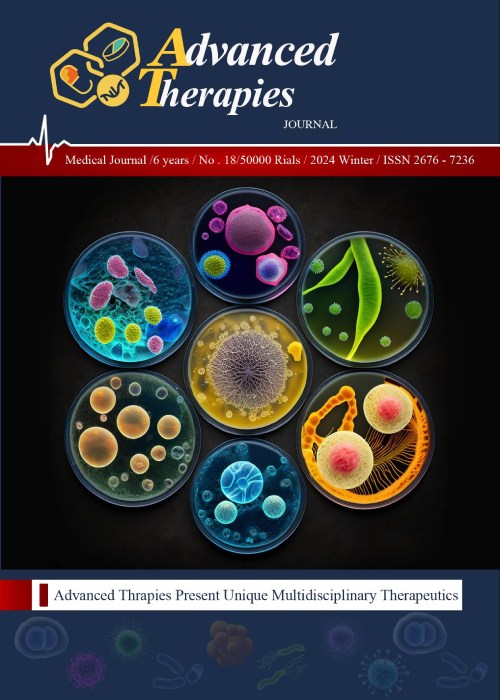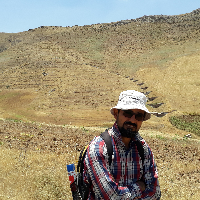Investigating the Phytoremediation of Seidlitzia Rosmarinus and Haloxylon aphyllum Desert Plants: A Case Study of Bauxite Crusher of Jajarm Alumina Mine
While Iran’s soil is considered one of the richest soils in terms of mineral deposits worldwide, it is contaminated with heavy metals. On the other hand, some studies have recommended the use of native plants as a sustainable strategy to resolve the environmental problems caused by mining. In this regard, phytoremediation can be regarded as an economical, effective, economical, biological, and practical method for removing heavy metals from contaminated sites. Therefore, this study sought to investigate the potential of Seidlitzia Rosmarinus and Haloxylon Aphyllum desert species for the phytoremediation of heavy metals (i.e., Ni, Co, As, Cr, and V) found around the bauxite crusher of Jajarm alumina mine in the direction of the prevailing wind.
Soil sampling was performed at distances of 450-700, 800-1200, 1400-2000, and 2500-5000 meters away from the center of the bauxite crusher and the control site. To this end, the seeds of the above-mentioned species were planted in pots with a 3:1:1 ratio of sand, dung, and soil, respectively. Then, the planted seeds were transferred, after two months, to the pots containing the soils sampled from target distances. Finally, upon the completion of the vegetative period, phytoremediation was carried out on the potential species using a factorial experiment in a greenhouse located at Gorgan University of Agricultural Sciences and Natural Resources, applying a completely randomized block design with three replications. The data analysis was then performed using the SPSS software, and Duncan's test was used to compare the obtained means for the significant results at the 5% level. To check the normality of the data, the Kolmogorov-Smirnov test. Moreover, the homogeneity of variances was checked via the Lyon test.
The results indicated that S. Rosmarinus and H. Aphyllum contained various amounts of heavy metals, with the amount of absorbed Arsenic (As), Chromium (Cr), and Cobalt (Co) being greater in aerial and underground tissues of the H. Aphyllum species than those of the S. Rosmarinus. However, the case was reversed in terms of Nickel (Ni) and Vanadium (V), that is, the number of such metals was greater in aerial and underground tissues of S. Rosmarinus tissues compared with H. Aphyllum.
On the other hand, while the transfer rate of As, Cr, and Co was higher in H. Aphyllum than that of S. Rosmarinus, the transfer rate of Ni and V was greater in S. Rosmarinus compared to H. Aphyllum. The results of the study also suggested that whereas the rates of Ni, As, Cr, and Co bioaccumulation factor was higher in S. Rosmarinus than those of H. Aphyllum, it was the bioaccumulation rate of Co that was greater in H. Aphyllum compared to the S. Rosmarinus.
In this regard, the average amount of Ni, Co, As, Cr, and V in H. Aphyllum were found to be 469.19, 172.74, 9.51, 21.59, and 23.07 mg/kg in the intended intervals, respectively. Moreover, the average transfer rates of such heavy metals in the species were reported as 1.09, 1.21, 1.08, 1.21, and 1.02, respectively, and the average bioaccumulation rate of metals was found to be 0.53, 0.26, 0.66, 0.50, and 0.30 mg/kg, respectively.
On the other hand, the study found that the average amount of Ni, Co, As, Cr, and Vanadium in S. Rosmarinus was 479.31, 169.34, 9.42, 21.18, and 30.85 mg/kg, respectively. Furthermore, the average rates of the transfer factor in the species were 1.20, 1.05, 1.01, 1.05, and 1.05, respectively, and the average rates of bioaccumulation were reported as 0.55, 0.24, 0.68, 0.54, and 0.39 mg/kg, respectively.
The results of the study also indicated a significant difference between the aerial and underground tissues of the intended species in terms of vanadium accumulation at a 1% significance level. Moreover, the transfer and bioaccumulation rates of Ni, Co, As, Cr, and V were greater and less than 1 in S. Rosmarinus and H. Aphyllum, respectively, indicating that the species had transferred metals to their aerial tissues. Therefore, as S. Rosmarinus and H. Aphyllum have low biochemical rates, they are appropriate for phytoextraction purposes in the phytoremediation process.
According to the results of the current study, S. Rosmarinus and H. Aphyllum are highly applicable for the extraction of Ni, Co, As, Cr, and V in the phytoremediation of the study area. On the other hand, as the intended species are indigenous to the study area, they can be planted in the area for clearance purposes. Moreover, after removing the aerial parts of S. Rosmarinus and H. Aphyllum for the preservation and clearance of the ecosystem, their remaining parts could be collected and burned under controlled conditions, using their ashes (as biological ore) for the re-extraction of metals or other economic purposes.
Therefore, the species are recommended for clearing the study area and similar areas of heavy metals. However, to conduct more comprehensive studies on the potential phytoremediation applicability of S. Rosmarinus and H. Aphyllum, it is necessary to necessary examine the species grown in pots in terms of field studies so that they can be used as a suitable model for phytoextraction and the revival of the lands contaminated with heavy metals.
- حق عضویت دریافتی صرف حمایت از نشریات عضو و نگهداری، تکمیل و توسعه مگیران میشود.
- پرداخت حق اشتراک و دانلود مقالات اجازه بازنشر آن در سایر رسانههای چاپی و دیجیتال را به کاربر نمیدهد.



